Discover 15 hidden attractions, cool sights, and unusual things to do in Groningen (Netherlands). Don't miss out on these must-see attractions: Groninger Museum, Noordelijk Scheepvaartmuseum, and Martinitoren. Also, be sure to include Noorderplantsoen in your itinerary.
Below, you can find the list of the most amazing places you should visit in Groningen (Groningen).
Table of Contents
Groninger Museum
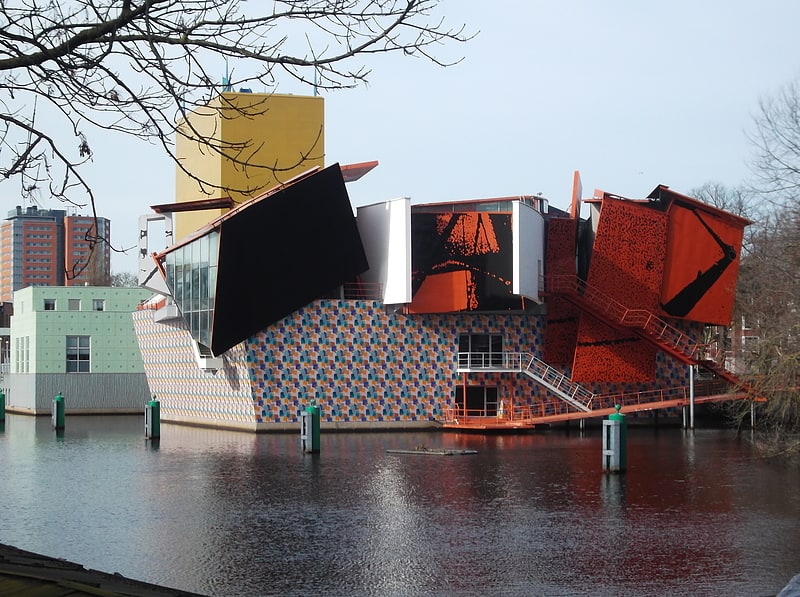
Museum in Groningen, Netherlands. The Groninger Museum is an art museum in the city of Groningen in the Netherlands. The museum exhibits modern and contemporary art of local, national, and international artists.
The museum opened in 1874. The current post-modernist building consists of three main pavilions designed individually by architects Philippe Starck, Alessandro Mendini, Coop Himmelb(l)au, and was completed in 1994.
Since 2008, it has had 173,000 to 292,000 visitors per year, the highest amount of any museum in the province of Groningen.[1]
Address: Museumeiland 1, 9711 ME Groningen (Binnenstad)
Noordelijk Scheepvaartmuseum
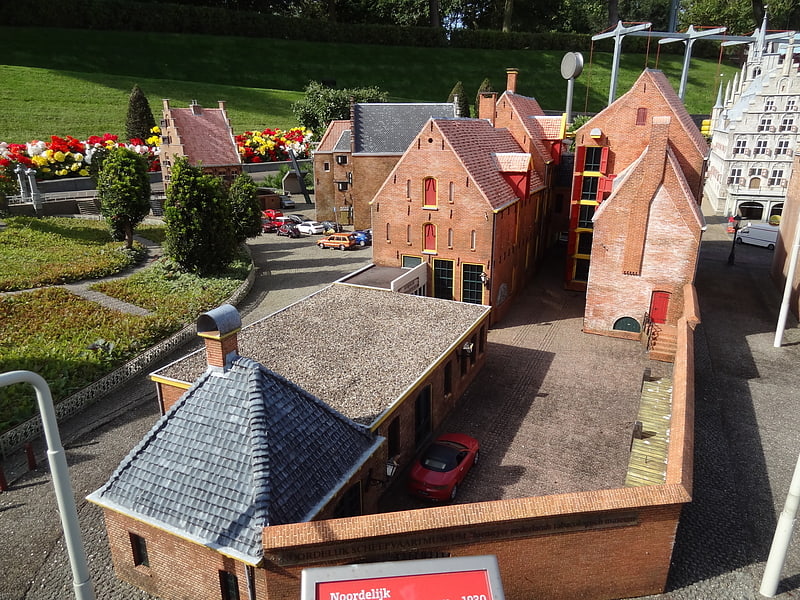
Museum in Groningen, Netherlands. Noordelijk Scheepvaartmuseum is a maritime museum in Groningen in the Netherlands.
The museum was opened on 31 March 1932. With 34,098 visitors in 2015, it is one of the most-visited museums in the province of Groningen. The museum had 38,757 visitors in 2017.
Jan Wiebe van Veen is the director of the museum and Wicher Kerkmeijer the curator.[2]
Address: Brugstraat 24, 9711 HZ Groningen (Binnenstad)
Martinitoren
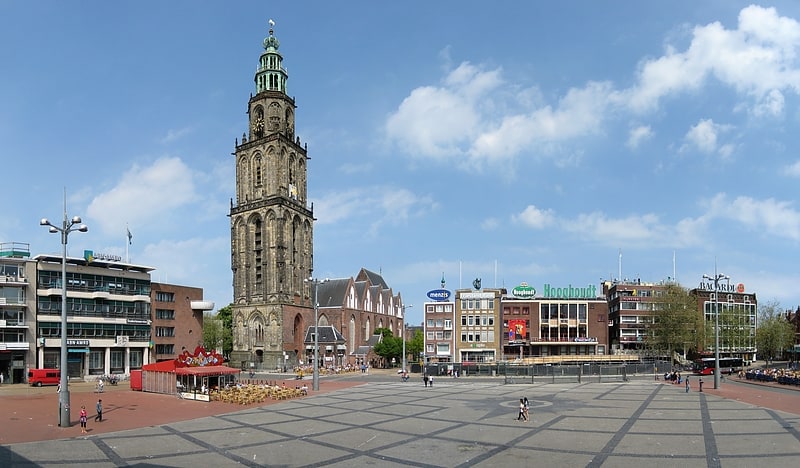
Landmark Gothic church dating from 1220. The Martinitoren is the tallest church steeple in the city of Groningen, Netherlands, and the bell tower of the Martinikerk.
The tower is located at the north-eastern corner of the Grote Markt (Main Market Square). It contains a brick spiral staircase consisting of 260 steps, and the carillon within the tower contains 62 bells. The tower is one of the main tourist attractions of Groningen and offers a view over the city and surrounding area. The front of the tower shows three pictures above the entrance: the blind poet Bernlef, Saint Martinus and Rudolf Agricola. All three are men are linked to the history of Groningen. The tower is tilting about 0.6 m, according to reports the tower has a foundation of only three metres deep. The citizens of Groningen call their tower d'Olle Grieze, meaning the old grey one in the local dialect.[3]
Address: Martinikerkhof 1, 9712 JG Groningen (Binnenstad)
Noorderplantsoen

Park in Groningen, Netherlands. Noorderplantsoen is an urban public park in the city of Groningen in the Netherlands, situated slightly north of the city center. Its name is Dutch for northern public garden.[4]
Nederlands Stripmuseum
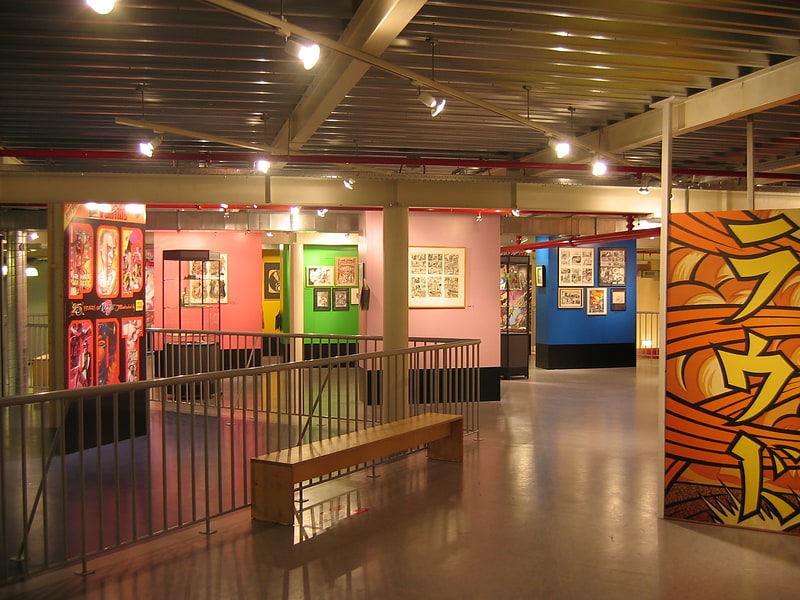
Museum in Groningen, Netherlands. The Nederlands Stripmuseum is a museum dedicated to Dutch language comic strips, with emphasis on native comic creations, and located in the city of Groningen in the Netherlands.[5]
Address: Westerhaven 71, 9718 AC Groningen (Schilders en Zeeheldenwijk)
Martinikerk
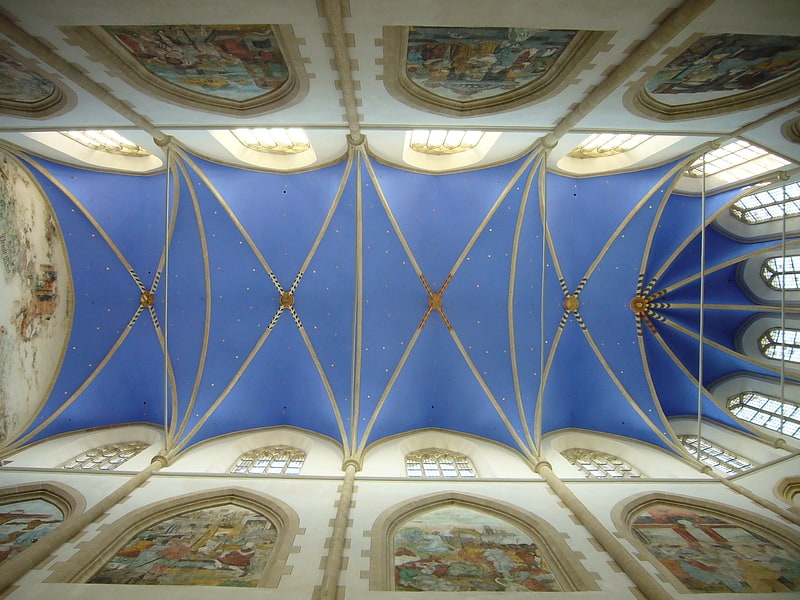
Landmark church dating back to 800 A.D.. The Martinikerk is the oldest church in Groningen, Netherlands. The church and its associated tower are named after Saint Martin of Tours, the patron saint of the Bishopric of Utrecht to which Groningen belonged.
The church was a cathedral for a short period during the first bishopric of Groningen (1559–1594).
The origins of the Martinikerk are a cruciform church built in the 13th century, which was extended in the 15th and 16th centuries. It contains several 16th-century tombs and Wessel Gansfort's 18th-century tomb. Much of the wall and roof paintwork has been preserved. Of particular note is a 16th-century depiction of the life of Jesus Christ.
The tower was built from 1469 till 1482, with later additions. Citizens of Groningen often refer to the tower as d'Olle Grieze (the Old Grey One). The original 13th-century tower was destroyed by lightning, and a new tower was built in the 15th century, also destroyed by lightning.
Its organ contains stops dating back to 1450, and was rebuilt and enlarged by Arp Schnitger among others. The church and organ are filmed extensively in the documentary Martinikerk Rondeau.[6]
Address: Martinikerkhof 3, 9712 JG Groningen (Binnenstad)
St. Joseph Cathedral
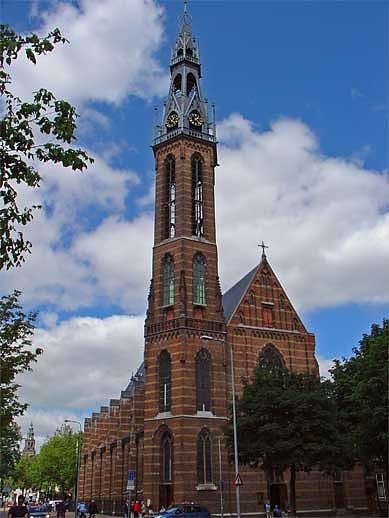
Also known as: Sint-Jozefkathedraal
Cathedral in Groningen, Netherlands. The St. Joseph Cathedral is the cathedral of the Roman Catholic Diocese of Groningen-Leeuwarden in the city of Groningen in the Netherlands.[7]
Address: 2 Radesingel, Groningen (Binnenstad)
Der Aa-kerk
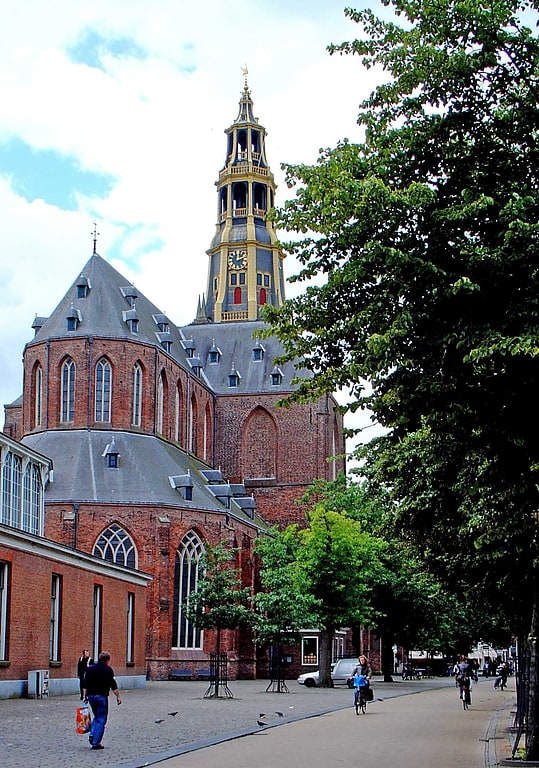
Event venue in Groningen, Netherlands. The Aa-kerk is a historic former parish church in the centre of Groningen, and a dominant feature in the skyline of the city together with the nearby Martinitoren.[8]
Address: Akerkhof 2, 9711 JB Groningen (Binnenstad)
Wall House
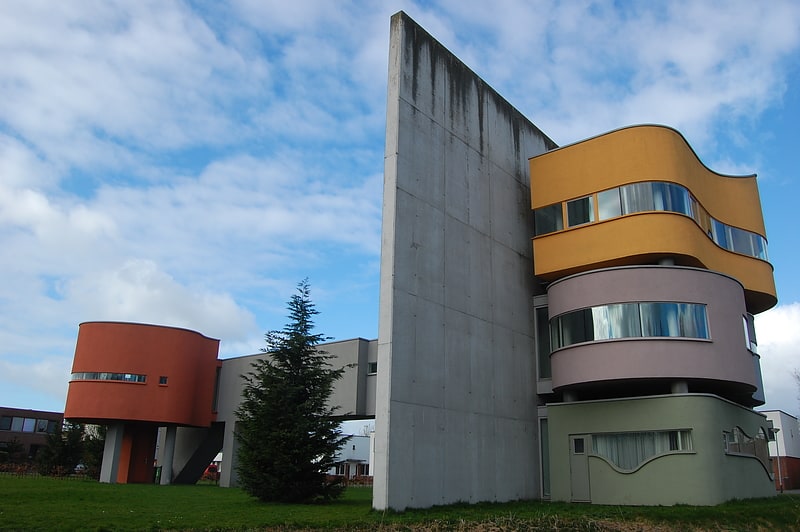
Building in Groningen, Netherlands. Wall House II is an historic building in Groningen, Netherlands, that was designed by John Hejduk. it is one of his few realized designs.
Heiduk originally designed Wall House II as a residence to be built in Ridgefield, Connecticut. However, due to cost constraints, the project was abandoned. In 2000, a Dutch development company, Wilma, started building the house in Groningen, based on Heiduk's original design and later revisions.
Wall House II has a very large wall as its central feature, composed of four organic-formed rooms and a long, narrow corridor. It is considered a mix of Cubist painting, Surrealist sculpture and architecture.[9]
Address: A.J.Lutulistraat 17, 9728 WT Groningen (Stadsparkwijk)
City Hall

Also known as: Stadhuis van Groningen
Seat of local government in Groningen, Netherlands. Groningen City Hall is the seat of government in Groningen, the Netherlands. The city council meets in a modern room downstairs, but upstairs in the former raadszaal the Gulden Boek is kept that lists the honored citizens of the town.[10]
Address: Groningen, Grote markt
Prinsentuin
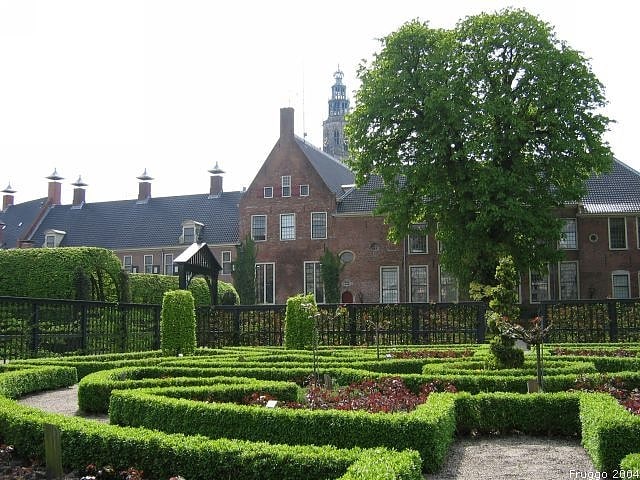
Garden in Groningen, Netherlands. The Prinsentuin or, Prinsenhoftuin is a garden built in renaissance style that is located in Groningen, behind the Prinsenhof This Garden consists of a rose garden, a herb garden, a part with berceaus and a sundial on the wall above the entrance.
The letters 'W' and 'A', the beginletters of stadtholder Willem Frederik of Nassau and his wife Countess Albertine Agnes of Nassau, are planted in the Prinsentuin to, using hedges.
On the side of the Turfsingel the garden is fenced of by a high wall. On one side you can still see a bit of the blu wall, that once stood optop of this wall. The blue wall, That was attached in the French period, had to avoid that people threw drinks over the wall when the Prinsenhof was a militair hospital. Nowadays a tea house is settled in the building.
The Prinsentuin is also known because of the annual event Dichters in de Prinsentuin (English: Poets in the Prinsentuin), where known and unknown poets read out their poems in the open air.[11]
Address: Martinikerkhof 23, entrance of the public gardens at the corner of Turfsingel and Kattenhage, Groningen (Binnenstad)
Bevrijdingsbos
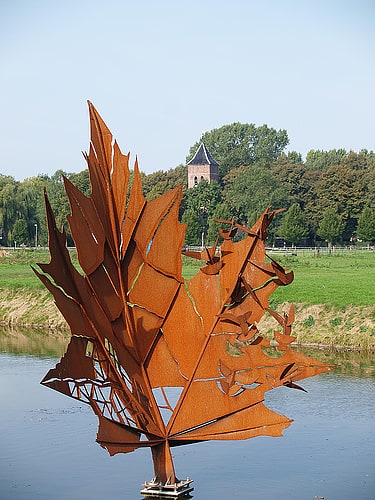
Memorial park in Groningen, Netherlands. The Bevrijdingsbos is a forest on the edge of the city of Groningen between the district Lewenborg and the village of Garmerwolde in the Netherlands.
The forest was planted in 1995 to commemorate the 50th year of liberation of the Netherlands by the Canadian Army in 1945. The forest is an acknowledgement and tribute to the Canadian armed forces who liberated Groningen in April 1945.
The forest consists of 30.000 maple trees, of which the leaf is the national symbol of Canada.
In and next to the Bevrijdingsbos can be found the so-called 'Plein van de Wereld' (Square of the World), an information sign, a memoriam bench and a monument engraved with the names of the Canadian army units who liberated the city and forced out the Germans.
Through the forest runs a path with big stones from ten different countries. On these stepping stones are written the Ten fundamental rights of children. The path ends with a stone which reads the eleventh right: The right of children to play outside freely and safely.[12]
Hunebed G1

Hunebed G1 is located southwest of Noordlaren in the Dutch province of Groningen. The hunebed lies on a knoll in a grove, which can be reached by a dirt road from Noordlaren. The hunebed is the northernmost of the hunebeds still in their original location within the Netherlands, and also the only Groningen hunebed still in its original location.
The dolmens G2 and G3 were once located in the Appelbergen near Glimmen, but have disappeared. At Onnen, hunebed G4 is suspected. The locations of these three megaliths were discovered by amateur archaeologist Jan Evert Musch. In 1982, during excavations near Heveskesklooster, hunebed G5, located even further north, was found. However, this last hunebed was subsequently moved to the Muzeeaquarium Delfzijl. More than one kilometer southeast of hunebed G1 are the two dolmens D3 and D4 from Midlaren.
The dolmen was archaeologically investigated in 1957 under the direction of Van Giffen.
Sint Geertruidsgasthuis

Also known as: Pepergasthuis
The Pepergasthuis is a hofje on the Peperstraat in Groningen, Netherlands.[13]
Winschoterdiep
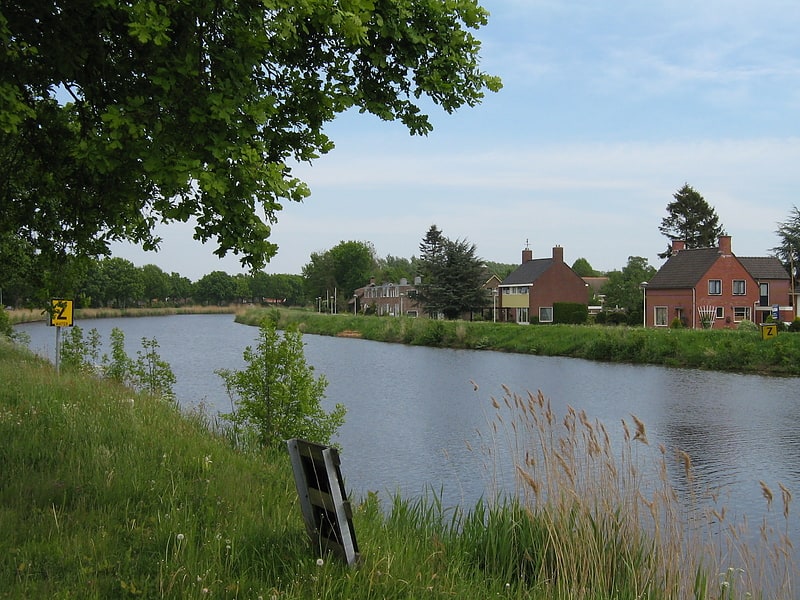
Canal in the Netherlands. The Winschoterdiep is a canal in the province Groningen of the Netherlands. It leads to the Rensel, which is actually part of this canal. Construction was started in 1618 and finished in 1634. The Winschoterdiep's total length is 35.5 kilometres, and it is approximately 100 metres in width. Sixteen bridges and locks are built across this canal, as well as many other passages. Ships must be less than 16 m in breadth to pass through some of these. It is one of the oldest canals ever built in Groningen still in use. In the section between Hoogezand and Waterhuizen, there are several shipwharfs. Hoogezand was founded near the canal in 1618.
Where the canal runs through the municipality of Menterwolde, there is significant water-sport activity in season.[14]